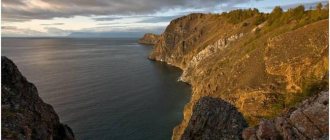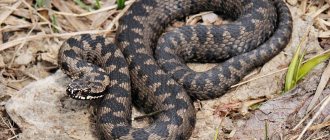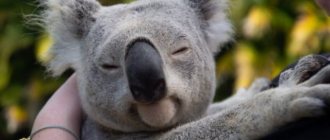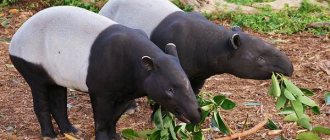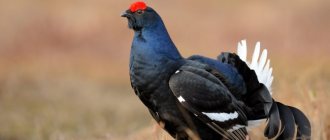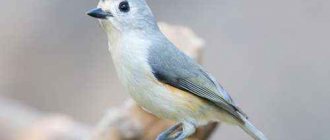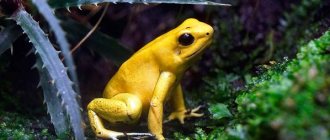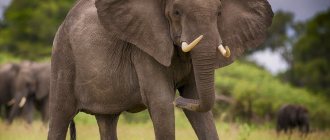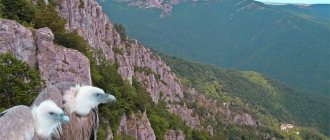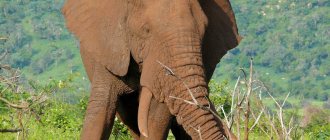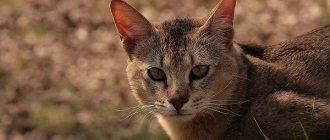Siberia is famous for its unique nature, which accommodates a wide variety of different mammals, insects, birds and reptiles. Their ubiquity in this region is due to their favorable location and climatic conditions. The Siberian wilderness, which consists of mountains, forests, huge lakes and rivers, has become home to a host of amazing mammals. Animals of large and small species filled the entire territory of Siberia. The Siberian taiga is home to the most dangerous predators, encountering which can be extremely dangerous.
Triton
This small amphibian is distinguished from others by its long tail. Biologists classify it as a member of the salamander family. Triton is widespread in Russia, especially in Siberia. But, every year, their population decreases significantly.
The average body length of a newt is 11 cm. Under favorable environmental conditions, it grows up to 15 cm. Males are larger than females. 40% of the amphibian body surface is the tail.
People believe that if you tear off this part of a newt’s body, it will grow literally before your eyes. In fact, this is a misconception; there is no need to do this, because removing the tail will not entail anything but the suffering of the animal.
When a newt is in water for a long time, the surface of its body is covered with small scales. And if he prefers to be on land for a long time, then it will be very smooth.
Most often, dark newts are found in the wild, less often they are colored green. Regardless of color, the amphibian’s head is covered with thin brown-black stripes.
Siberian newts
Insects of Siberia
More than a hundred species of different synanthropic non-parasitic insects are found on the territory of the Siberian region, and some species are capable of causing some damage to agriculture, seed funds and food supplies. Moths, beetles, herbivorous moths and grinders are quite widespread.
Hessian fly
The two-winged insect belongs to the mosquito family. The fly, which harms field crops, can destroy many cereal crops, including rye, wheat, barley and oats. The average body length of an adult insect does not exceed 2 mm. The wings have a grayish-smoky color with a pair of longitudinal veins. The legs of the fly are thin and long, reddish in color. The abdomen of males is narrow, cylindrical in shape, while that of females is wider and pointed.
Grasshopper
A relatively large insect, one of the most common representatives of the Orthoptera order. The difference from locusts is the presence of very long antennae. Grasshoppers prefer areas with dense and very tall grass and inhabit fields sown with various cereal crops. The insect is found in steppes with forbs, on the outskirts of forests with the presence of rare trees. Large concentrations of grasshoppers are observed on forest edges and meadows surrounding water bodies.
Leafrollers
Representatives of a special family of butterflies belong to the order Lepidoptera. Leafrollers have bristly or finely ciliated antennae, as well as a rather short and spiral, sometimes underdeveloped proboscis. The wings at rest are folded like a roof, and the upper wings can have an elongated triangular shape. Leafworm caterpillars have sixteen legs and differ from adult individuals by having a body covered with scattered and very sparse hairs.
pine beetles
Representatives of a special group of beetles belonging to the family of bark beetles are quite close to the family Weevils. The length of the cylindrical or oval body of an adult can be 8 mm. Most often, black or brown specimens are found; less often, gray pine beetles with a yellowish pattern can be seen. The insect's head is round, retracted into the region of the chest shield, sometimes with the presence of a rudimentary proboscis.
Moorish bug
The insect, belonging to the order Proboscis, is distinguished by its oblong body shape. The body length of an adult bedbug significantly exceeds its width. On the triangular head there is a pair of complex and small eyes and a pair of ocelli on the parietal region. The antennae are thin, slightly shorter than the head. The front part of the bedbug's back is characterized by the presence of two processes. The front back is wide, slightly convex. The abdomen is wide and flat, consisting of seven segments.
May Khrushchev
A beetle from the Lamellaridae family has a black body 25-30 mm long, with gray hairs and white triangular spots on the sides of the abdomen. The male's antennal club is represented by seven plates. The beetle's elytra are single-colored, reddish-brown in color. The beetle's scutellum is large, semi-oval, smooth and shiny, sometimes with less or more dense punctures and small hairs or scales.
Gadflies
Representatives of a small family of flies that have a hemispherical head with bare eyes. Females have eyes spread quite wide at the back of their heads. The short antennae of males are located in the fossa of the frontal zone and are covered with feathery bristles. The proboscis is large, geniculate, horny, retracted into the mouth opening and invisible from the outside. The body is large in size, wide, with a transverse seam on the back. There are small transverse wrinkles on the wings.
Rye worm
Caterpillar of butterflies belonging to the family of Noctidae or Owlheads. The rye or winter worm has brown-gray or brown-red wing aprons. The hind wings of winter worms are distinguished by their white coloring and dark edges and veins. The antennae of females have bristles, while males have short, feathery antennae. The smooth body of the rye worm is characterized by an earthy-gray, sometimes greenish color.
Sawflies
A representative of a large family of Hymenoptera insects has a body no more than 32 mm long. The head is mobile, wide, hemispherical, with two round eyes on the sides and three simple ocelli on the forehead. The antennae are mostly bristly or filiform. The mouth part for chewing and the body are very well developed. Two pairs of wings are transparent, sometimes smoky in color and non-folding.
Return to content
black crane
The fauna of Siberia is diverse. It is represented not only by unique mammals, amphibians and insects, but also by birds. The black crane is one of the largest birds living here. Due to the rapid decline in population, it is listed in the Red Book.
Its body length ranges from 90 to 110 cm. Male cranes are slightly larger than females. The legs, tail and body of the crane are painted black, and the head and neck are white. There is a red spot on the top of its head that also covers the eye area.
The beak of this stork has a green-pink tint. It settles mainly in swamp areas. The nest is built before breeding. Dense forest thickets do not attract the black crane at all; it is indifferent to them. He prefers to nest not in vast, but in small areas. Before the winter cold, the bird leaves the wetland and settles near fields, mainly rice fields.
A special feature of the black crane is its omnivorous nature. Among the products of its diet are not only plants, but also insects and animals. The bird's favorite food is berries and frogs. By the way, he very cleverly catches amphibians, quickly swallowing them. Since the number of the black stork decreases every year, national legislation has taken it under its protection.
Pair of black cranes
Where are endangered species protected?
Now the restoration of flora and fauna is one of the main tasks of people who previously thoughtlessly treated the environment. By developing new territories and extracting more and more natural resources, people gradually displaced animals, thereby endangering them. Now many species live in national parks and reserves.
Thus, in the territory of eastern Siberia there are the Barguzinsky and Baikalsky nature reserves, containing from 39 to 50 species of mammals, several hundred birds of different species, amphibians and reptiles. It is also impossible not to mention the Dzherginsky Nature Reserve, which has over 40 rare animals. In addition, conservation work is being carried out in such national parks as Shorsky, Zabaikalsky, Alkhanay, Pribaikalsky and Tunkinsky. Hunting is strictly prohibited in these places, and groups of scientists are diligently creating conditions under which the number of animals will begin to grow.
Frog
This animal of western Siberia is very common not only here, but throughout Russia. It is difficult to find a body of water that does not contain frogs. The population of the common lake frog in Siberia is huge.
When a fisherman goes out to a pond early in the morning, he can be sure that his loneliness will be brightened up by these small green amphibians. By the way, the body length of a medium-sized frog is 15 cm. The more favorable the living conditions, the larger the size it reaches.
Siberian frog
Elk
The largest animal in eastern Siberia is the elk. It belongs to mammals. Its habitat is dense mixed forests. The moose avoids people because it is afraid of attack. Yes, despite his size, he is quite shy. There are just over 700 thousand moose throughout the Russian Federation.
This animal weighs more than 500 kg. The male moose is larger than the female and weighs 50-70 kg more. The body of this animal is massive. There is a withers on his neck. Since it is quite fluffy, the visual impression is that the moose has a hump. In fact, his lush withers are a fold of fat and wool. Thanks to its long massive legs, when coming to a watering hole, an elk can go quite deep into the water.
Ermine
This is a small, nimble and very beautiful animal that attracts people's attention. But in order to see it, you will have to make an effort, since the ermine is incredibly fast and dexterous. He does not like to contact people because he is afraid of them.
The ermine lives exclusively in the eastern part of Siberia. Most of all, he is attracted to the taiga. Biologists classify this animal as a member of the mustelidae family. This is a small animal with very short legs. The size of a medium-sized individual is 25-30 cm.
In these parts there are reddish and snow-white ermines. The color of an animal does not in any way affect its character and behavioral characteristics. Despite the large population, this small animal is under state protection. The reason is frequent hunting for him. Poachers are attracted to the valuable ermine fur.
Siberian stoat
Other animals that live a little further south
To the south you can find such Siberian animals as ermine, weasel and even wolverine, which often like to visit residential settlements to feast on poultry. Previously, wild deer roamed Western Siberia in huge herds, but now their numbers have greatly decreased and amount to only twenty-five thousand individuals. The sable, which is also a game animal, inhabits coniferous and mixed forests. Its production is a serious economic component in the Khanty-Mansiysk Okrug and Tomsk Region. Therefore, illegal fishing of sable and other animals with valuable fur is punishable by law.
Manul
Pallas's cat is considered a wild animal of Siberia . By the way, he is considered the smallest cat living in Russia. Despite the lush fur, which gives rise to the misconception that the cat is a large animal, any sound can cause him to panic. A frightened animal will run away very quickly.
Manul is one of the most cautious animals. It reacts to danger in a standard way for wild animals - it runs away. Sensing a threat, it hides and tries not to make a sound. He can remain in this defensive position for a long time.
During the daytime, it prefers to rest using shelter. The period of activity occurs in the afternoon and early morning. He loves to sleep in fox holes. But if it was not possible to find such a secluded place, the manul will go to the rock and find a gap there. An alternative way to relax is to crawl under a large rock.
Despite the fact that the Pallas' cat walks a long distance every day, biologists classify it as a sedentary animal. In the wild, he has enemies, mainly large predators, such as wolves.
A resident of Siberia, the cat Manul
Squirrel
The squirrel is considered a widespread rodent in Siberia, living in the North. Its body is small and elongated, and its tail is bushy. Despite its small size, the squirrel is very nimble and agile. Small, strong paws and sharp claws help her move easily along a wooden trunk.
In these areas, hardworking people are called “hard-working squirrels.” This has to do with respect for this rodent. He cares about the future, so he prefers to put aside winter food supplies. In every forest hollow you can find nuts, acorns and roots - products from the diet of the little squirrel. In nature, there are known cases of theft of winter reserves. If this happens, and the rodent predicts starvation in the winter, it may resort to suicide.
Most often, squirrels with a red tint of fur are found in nature. But, with the onset of cold weather, it changes color to a darker, sometimes gray. Due to the rapid decline in the population of these animals, the state took them under its protection. Therefore, today hunting squirrels in Siberia is fraught with criminal liability.
Poisonous plants
Often, many people mistakenly assume that plants that are hazardous to health grow only in the hot tropics, but once you go to the country or to the forest, you cannot avoid encountering them. At the same time, many animals in Siberia feed on them without harm to their health, but they can only bring mortal danger to humans. Thus, special caution should be exercised around representatives of the buttercup family, which cause poisoning. Just by sniffing a bouquet of such flowers, you can get a severe burn to the skin, eyes, spasms of the muscles of the larynx and suffocation. Leaf juice ingested causes nausea, vomiting, and can even affect the central nervous system.
Also in the forest and steppe zones of Siberia, poisonous hemlock, or hemlock, grows.
The dangerous substances contained in its roots and leaves spread incredibly quickly, causing convulsions, epileptic seizures and death. It is also recommended to avoid black henbane, common wolfberry, crow's eye, datura and Lobel's hellebore. These plants are weeds and all parts of them are poisonous, especially the seeds.
Since Siberia has a predominantly continental climate with fairly warm summers and cold winters, the species diversity of the flora is simply amazing. However, some plants are still on the verge of extinction.
Hare
The Russian people nicknamed this little animal “coward.” This name is absolutely justified, because hares are very shy. As soon as they hear the noise, they quickly rush off into the distance. There are 2 types of hares found in Siberia: the hare and the hare. The fur of the first is snow-white, and the second is reddish. In character they are not much different from each other.
The hare is a fairly large animal, weighing up to 3.5 kg. They attract hunters not only with their fur, from which they make clothes, but also with their dietary meat. Hares are among the solitary animals that come into contact with other individuals solely for the purpose of reproduction.
Spiders
Arthropods belonging to the Arachnida class are represented in Siberia by a fairly large variety of species that differ in color and behavior, as well as habitats.
Steatoda
The false karakurt belongs to the category of large-sized spiders and is distinguished by its shiny black color with a red pattern. The average body size of an adult female is 20 mm, and the male is slightly smaller. In the head region there are clearly visible and very long chelicerae. The spider is an inhabitant of the forest thicket, but may well be found in a human home. Steatoda is nocturnal.
Black Widow
A dangerous spider belongs to the category of poisonous but non-aggressive species, and the consequences of a bite directly depend on a person’s immunity. The appearance of the black widow is very impressive. The spider is black and shiny in color, has a convex abdomen and a red spot that resembles an hourglass shape. Representatives of the species are characterized by long and powerful limbs, as well as medium-length chelicerae.
Cross
A widespread species inhabiting forests, fields, forest edges, meadows, as well as gardens, courtyards and abandoned buildings. The small spider has a characteristic pattern in the form of a cross, which is located at the top of the abdomen. Crosses are active only in the dark, and during the day they prefer to hide in secluded places. The spider's venom paralyzes prey instantly, and the bitten insect dies within a few minutes.
Black fathead
The spider is distinguished by a unique, quite bright color, has a black and velvety cephalothorax, as well as long and powerful legs with white stripes. The abdomen is convex, red with four large circles. Females of this species are larger than males. The black fathead settles in burrows, preferring dry areas and sunny meadows. The spider does not attack people, and bites only for the purpose of self-defense.
Tarantula
A large poisonous araneomorphic spider from the family of wolf spiders has been actively exploring new territories, including Siberia, in recent years. Representatives of the genus have a very highly developed sense of smell and good visual apparatus. The upper part of the cephalothorax is equipped with eight eyes. Tarantulas do not weave catching nets, and the web is used only to cover the walls in the burrow and when spiders make a special egg cocoon.
Common mole vole
This is one of the funniest rodents in the world. The mole vole is a small hamster-like animal belonging to the subfamily of voles. The color of the animal is brown, black and gray. He inherits the color of his coat from his ancestors. The main distinguishing feature of the mole vole is its large front teeth, which fall out of the mouth.
Two types of these rodents live in these parts: the common and eastern mole voles. With the help of its massive teeth, the animal not only cracks nuts, but also digs underground passages. To speed up the process, it helps itself with its paws. Many rodents are active only at night, but mole voles are an exception. The period of his wakefulness is not determined by the time of day. The animal can sleep both in the morning and in the evening.
Another specific feature that distinguishes it from other animals is the absence of a hibernation period. Yes, this rodent does not hide in a deep hole to spend the winter in it. The main enemies of the mole vole are large predators that eat small game.
Siberian mole voles
Plants that can be collected in Siberia
Thanks to the natural environmental conditions of the vast geographical region located in the northeastern part of Eurasia, many representatives of the fauna had the opportunity to eat a variety of food and hide from predators in the dense crown of trees and thickets. However, not only Siberian animals, but also humans can consume plants. So, at the end of summer, true connoisseurs of traditional medicine recipes recommend collecting the following types of herbs:
- Dandelion (roots, leaves and even flowers of the plant contain many vitamins and trace elements). Juice is made from the collected mass, which helps with diseases of the bladder, liver, kidneys and diabetes. And the gruel is intended for the treatment of skin diseases, ulcers and wounds.
- Bergenia (leaves, roots, seeds and flowers have diuretic, antimicrobial and blood-restoring properties). To prepare real Altai tea, it is best to collect blackened, dried leaves that have lain under the snow all winter.
- Burnet (a decoction of crushed roots is recommended for gastrointestinal diseases).
- Valerian – has a sedative, calming effect. The roots of the plant improve blood circulation, regulate heartbeat, help with neuroses, insomnia and migraines.
- Hawthorn - bark, flowers and berries are excellent for making tea, extracts and tinctures that help with tachycardia, neuroses, arrhythmia, atherosclerosis.
In addition to these herbs, you can collect the fruits of rowan, sea buckthorn, cranberry, rose hips, as well as leaves of lemon balm, stinging nettle, great plantain, calendula flowers and burdock roots. All this can have not only a healing effect on the body, but also fill tea drinking with the aromas of summer and give unforgettable moments of pleasure.
Wolf
These animals of Siberia look impressive and noble in the photo. They are the largest local animals from the canine class. Wolves are carnivorous mammals, of which there are many varieties. However, in Siberia there are only 2 types of wolves: tundra and common.
To distinguish a male from a female, it is enough to pay attention to the size of the individual. The first ones are much larger and heavier. The weight of an average-sized male wolf is 70 kg, and that of a female is 50. The average body length of the animal is 1.8 meters.
The wolf is a herd animal. They form groups and lead a common lifestyle. Few people know, but they create pairs for life. However, if the male, for some reason, dies, the female can take on a new partner, as she is driven by the reproductive instinct.
She-wolves are some of the best mothers in the wild. They treat their children very kindly. But the female forgets about the presence of family ties when her wolf cubs begin to feed on their own.
Wolves hunt in packs. In these parts, medium-sized moose are often their food. In a pack, there is a clear distribution of social roles: there is a leader, the main individual, his female, the second in hierarchy, and omegas. When the alpha becomes old and weak, one of the omegas can challenge him and, if he wins, become the leader.
Siberian wolf
Kamchatka marmot
This is a very funny animal belonging to the class of rodents. Among other small representatives of the fauna, the Kamchatka marmot stands out with its meaningful look. However, there is no scientific evidence that their presence is associated with outstanding intellectual abilities. The Kamchatka marmot is a sedentary animal. He lives in small burrows. In addition to intelligent eyes, nature has endowed him with beautiful brown-black fur.
This small animal has teeth that grow throughout its life. He has them quite sharp, thanks to which he is able to easily crack nut and cone shells. By the way, the Kamchatka marmot often has to do this, since due to the regular growth of teeth, there is a need to grind them down. The Siberian marmot hibernates annually with the onset of cold weather. He finds a secluded place for winter sleep in the mountain slopes.
Siberian resident Kamchatka marmot
long eared hedgehog
This long-eared hedgehog lives in the southwest of Siberia. These are the most ancient mammals on the planet, their ancestors appeared during the time of dinosaurs. It differs from a regular hedgehog in having large ears and high legs.
They hunt only at night and hibernate during the winter. This hedgehog feeds on ants, spiders, caterpillars and bird eggs. Currently, the number of this animal is extremely small. Over the course of 50 years, only 5 individuals of eared hedgehogs were counted.
long eared hedgehog
Musk deer
Musk deer joins the list of rare animals of Siberia. Not long ago, it was listed in the Red Book. This representative of the fauna species is one of the types of deer, but it is very different from its closest relatives.
The specificity of musk deer, like deer, is the absence of horns. But she has another difference - large front teeth. If you have never met a musk deer before, then when you see it, you risk getting very scared. The reason is large teeth protruding from the mouth. Because of them, the people called this beast “saber-toothed deer.”
This representative of the fauna has many enemies who are not averse to feasting on it. To a greater extent, she is afraid of wolves. The fear that the musk deer experiences of predators has driven it into rocky areas. It is there that their settlements can be found.
Musk deer antlerless deer with fangs
Wolverine
Not to be confused with actor Hugh Jackman :); The Siberian wolverine is a strong and stocky scavenger, also known by the unfortunate name of "skunk bear" due to its foul odor. In addition, wolverines follow the tracks of wolves, lynxes and other predatory mammals in hopes of finding abandoned prey, although they can also hunt animals larger than themselves due to their ferocity and incredible strength. Fun fact: Wolverines have evolved teeth specifically designed for tearing apart frozen solid flesh.
Sable
Hunting for Siberian sable is very popular in these parts. Poachers are attracted primarily by its fur, which is used for making clothes.
At first, the sable may seem cute to you, but do not rush to trust the first impression, because this representative of the fauna is a bloodthirsty predator. His main food is small game, and he is especially fond of chipmunks.
The size of a medium-sized sable is 50 cm. Males are slightly larger than females. The color of the coat can be red, gray, brown and even olive. The color of an animal is determined solely by genetic factors.
Despite the fact that this animal moves quickly using wooden branches, it prefers to lead a terrestrial life. The sable is a nimble and agile animal that easily avoids conflicts with other representatives of the animal world.
Reindeer
One of the most beautiful animals in Siberia. His “calling card” is long, well-designed horns. The process of updating them takes place annually. Males shed their antlers several months earlier than females.
By the way, the first ones are much larger. The weight of a medium-sized male reindeer is 500 kg, and a female reindeer is 350 kg. Even a person far from zoology can visually determine the age of a deer. Just pay attention to the shape of its horns. In mature individuals it is more complex than in young ones. But at the 5th year of life, the process of forming antlers in a deer is completed.
Reindeer are unique animals because, due to the fact that their fur is enriched with oxygen, they do not get wet in water, and even more so, do not drown in it. The coat color of these beautiful animals is predominantly gray-brown. In young individuals, the fur is colored in a lighter tone.
An interesting feature of reindeer is that in winter its fur becomes longer and denser. The reason for this is clear, insulation. These representatives of the animal world are more attracted to the tundra, since there is a lot of plant food there. Every year, their population decreases. But this is due to the attacks not of hunters, but of wolves.
Siberian reindeer
Siberian boar
The wild boar is the largest artiodactyl living in these areas. Its peculiarity is its unpretentiousness in food. This large animal is happy to feast on both nuts and small chipmunks. The pigs that people keep at home are descended from the wild boar. The Siberian wild boar prefers to live in steppe areas. Its average weight is 200 kg. Female wild boars weigh slightly less, up to 180 kg.
This wild animal is distinguished from the domestic pig by its dense fur and protruding ears. If you touch it, you can feel the hardness. This is due to the coarse bristles that cover the entire body of the animal. It has a brownish-yellow color.
A wild boar
Partridge
This is a bird from the order Galliformes, widespread throughout Siberia. Hunting for it is very popular in these parts. This is due to the fact that partridge meat is soft and tender to taste. Because of this, the number of birds decreases every year. This fact could not fail to attract the attention of the authorities, therefore, a decree was issued banning the shooting of partridges in protected Siberian areas.
This territory is inhabited by the stone species of this bird. It has an average size and weight. The weight of a medium-sized individual is 600 grams. These representatives of the feathered world are attracted to mountain gorges, which is why they settle there. As an alternative, they use a river canyon.
They make nests mainly on the ground, less often on a tree. An important requirement for the place of their settlement is that it must be covered with dense vegetation. Female partridges are excellent mothers. They incubate the eggs for 3 to 4 weeks. The chicks of this bird leave the nest within a day after hatching.
Siberian partridges
Taiga climate
The Siberian taiga is located in the subarctic and temperate climate zones. Therefore, depending on the geographical location, there are significant differences in the climate and weather conditions of the northern and southern taiga. The climate also differs along the meridional grid due to the predominant westerly air transport. Climatic patterns in the Siberian taiga are disrupted due to the diversity of relief and intrusions of Arctic cold air.
In the north of the taiga zone in the subarctic there are harsh, snowy winters and short, fairly cool summers. Average July temperatures range from +13оС - +14оС; on hot days the air can warm up to +25оС - +27оС. Average January temperatures here are 18°C – 29°C; with cold arctic winds, the absolute temperature can drop to -50°C. The duration of the frost-free period is 75-80 days. There is a lot of precipitation in the taiga, up to 450-500 mm/year; with little evaporation on frozen soils, huge spaces become swamped.
The southern part of the taiga zone is characterized by a warmer temperate climate with average July temperatures of +18°C - +19°C and a frost-free period of 115-120 days. On hot, clear days, the air in intermountain valleys can warm up to +35°C - +38°C. Average January temperatures are -16°C, -18°C; with the intrusion of cold northern winds, the air can cool down to -45°C, snow cover up to 90-100 cm. Precipitation is 400-550 mm/year, evaporation here increases, and the area of swamps decreases.
Polar bear
One of the largest animals living in Siberia. It belongs to the class of mammals. The polar bear has an impressive size, due to which other representatives of the fauna prefer to avoid it. In a fight, he will defeat even the grizzly bear that lives in North America.
This powerful beast does not freeze at all, even at very low temperatures. This is due to the presence of thick fur covering its entire body. There is even hair on the animal’s legs, which allows it to move smoothly even on ice.
At first impression it may seem that the polar bear, due to its size, is very slow. This is not so; the impressive mass does not at all prevent him from being dexterous and efficient. This animal not only runs fast, but also swims beautifully.
By the way, even after a winter swim, this animal will not freeze, because its fur has a special fat that repels water. Therefore, he literally gets away with it. This representative of the fauna does not lead a sedentary lifestyle, preferring to roam.
European roe deer
Roe deer belong to the order of artiodactyl animals. Males have horns, while females are hornless. The color is not changeable, it is the same in males and females - grayish and with red tan.
There is always a white spot under the short tail. Their size is not large, so roe deer are sometimes called wild goats or small deer.
Roe deer babies are born spotted. They feed on tree bark, moss, grass and young shoots. Roe deer move by jumping and, anticipating danger, are able to cover their tracks.
European roe deer
Bat
This vampire beast belongs to the class of mammals. Their main feature is the fear of terrestrial space. The bat prefers to move along wooden branches or soar in the air like a bird.
These animals live in cool areas with high moisture levels. Their favorite habitat is narrow caves or rocks. In such “dwellings” they can be seen even during the day. The bat sleeps upside down, clinging to the edge of the rock with its paws. During sleep, she closes her tiny eyes with the edges of her black wings.
Another distinctive feature of this nocturnal animal is its very sharp teeth, which they can easily penetrate into the flesh of small animals. Despite poor eyesight, they have excellent hearing.
Siberian bat
Fox
The fox, like the wolf, belongs to the canine family. This is a predatory animal that is distributed throughout Siberia. Its color is predominantly red. But there are also black-gray individuals of this species. Its body length ranges from 80 to 100 cm (including tail).
These representatives of the fauna prefer to settle in open areas. Despite their cautious behavior, they often come into contact with people, especially if they feed them. Interesting feature! The colder it gets, the faster the color of fox fur changes. With the onset of summer, it turns variegated.
Fox
The fox belongs to the predators from the canine order. Their fluffy fur is prized for its warmth and bright colors. Foxes have a large, fluffy tail of 60 cm, and the length of the fox's body is 90 cm.
Foxes are mainly found in open spaces. They are considered predatory animals, but in the absence of food of animal origin they can make do with plant foods.
The red-haired cheat lives in burrows and builds its dwellings on hills so that water does not get there. The color of the fox differs slightly depending on the time of year; in summer it is brighter, and in winter it turns into grayish and faded tones.
Mountain goat
Based on the name, it is easy to establish that this animal lives near mountains and rocks. The mountain goat has been considered a rare animal listed in the Red Book for many years, as its population is regularly declining.
On the Internet you can find a lot of videos of these animals nimbly climbing rocks. You can often spot such an animal on a rocky cliff. However, in the wild they almost never fall from mountains and are not injured.
Residents of Siberia, mountain goats
The endurance of the mountain goat is amazing. Despite the caution, this is a very brave animal that can stand up for itself. His diet consists of:
- Lichens and mosses;
- Herbs;
- Shrubs;
- Roots.
Unfortunately, the mountain goat is often the reason for the slow process of forest restoration. If it settles in a clearing area, it gnaws on the wooden bark. Thus, the forest does not regenerate. These animals come into contact with other individuals in pursuit of the goal of mating. They reproduce in late autumn and early winter.
Types of taiga forests
The light-coniferous type of taiga is widespread throughout Siberia; it includes dry pine forests and larch forests. Such taiga grows in moderate weather conditions, or in areas of sharply continental climate, with changes in temperature and humidity. In spacious and light pine forests, the spreading crowns of trees are located high above the ground and allow a lot of sunlight to pass into the undergrowth. In such a forest there are many berry bushes and rare herbs, an abundance of mushrooms and various game.
The larch forest is even lighter than the pine forest, the openwork crowns with soft needles transmit light well, and the needles fall off in the winter. The lush green larch needles turn bright yellow by autumn, giving the impression of the openness of the area and an extraordinary golden fairy tale. Resin, flowing down tree trunks and heating up in the sun, saturates the air with pleasant pine aromas.
The dark coniferous type of taiga, consisting of spruce forests, cedar and fir forests, the so-called “urmans” stretch in a continuous massif across the vast expanses of Siberia. This taiga is typical for the northern regions of Siberia, high mountain ranges, elevated plateaus and valleys of Siberian rivers. Closed by their crowns, such forests do not allow sunlight into the undergrowth; they are always in twilight, there are few grasses and shrubs, and there are a lot of mosses and lichens on the stones and trees. Due to the lack of sunlight, such a forest is always humid and damp.
